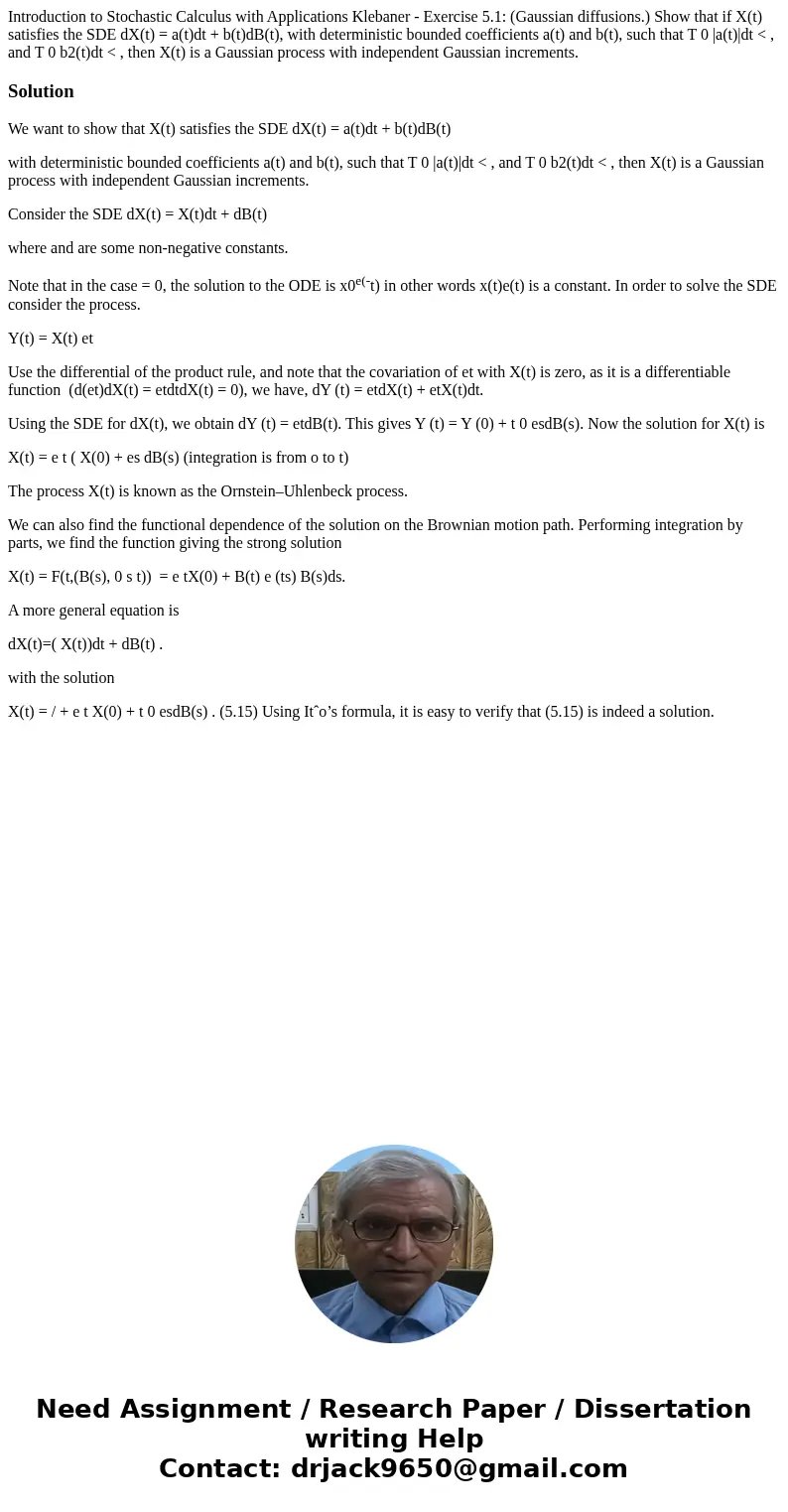Introduction to Stochastic Calculus with Applications Kleban
Introduction to Stochastic Calculus with Applications Klebaner - Exercise 5.1: (Gaussian diffusions.) Show that if X(t) satisfies the SDE dX(t) = a(t)dt + b(t)dB(t), with deterministic bounded coefficients a(t) and b(t), such that T 0 |a(t)|dt < , and T 0 b2(t)dt < , then X(t) is a Gaussian process with independent Gaussian increments.
Solution
We want to show that X(t) satisfies the SDE dX(t) = a(t)dt + b(t)dB(t)
with deterministic bounded coefficients a(t) and b(t), such that T 0 |a(t)|dt < , and T 0 b2(t)dt < , then X(t) is a Gaussian process with independent Gaussian increments.
Consider the SDE dX(t) = X(t)dt + dB(t)
where and are some non-negative constants.
Note that in the case = 0, the solution to the ODE is x0e(-t) in other words x(t)e(t) is a constant. In order to solve the SDE consider the process.
Y(t) = X(t) et
Use the differential of the product rule, and note that the covariation of et with X(t) is zero, as it is a differentiable function (d(et)dX(t) = etdtdX(t) = 0), we have, dY (t) = etdX(t) + etX(t)dt.
Using the SDE for dX(t), we obtain dY (t) = etdB(t). This gives Y (t) = Y (0) + t 0 esdB(s). Now the solution for X(t) is
X(t) = e t ( X(0) + es dB(s) (integration is from o to t)
The process X(t) is known as the Ornstein–Uhlenbeck process.
We can also find the functional dependence of the solution on the Brownian motion path. Performing integration by parts, we find the function giving the strong solution
X(t) = F(t,(B(s), 0 s t)) = e tX(0) + B(t) e (ts) B(s)ds.
A more general equation is
dX(t)=( X(t))dt + dB(t) .
with the solution
X(t) = / + e t X(0) + t 0 esdB(s) . (5.15) Using Itˆo’s formula, it is easy to verify that (5.15) is indeed a solution.

 Homework Sourse
Homework Sourse